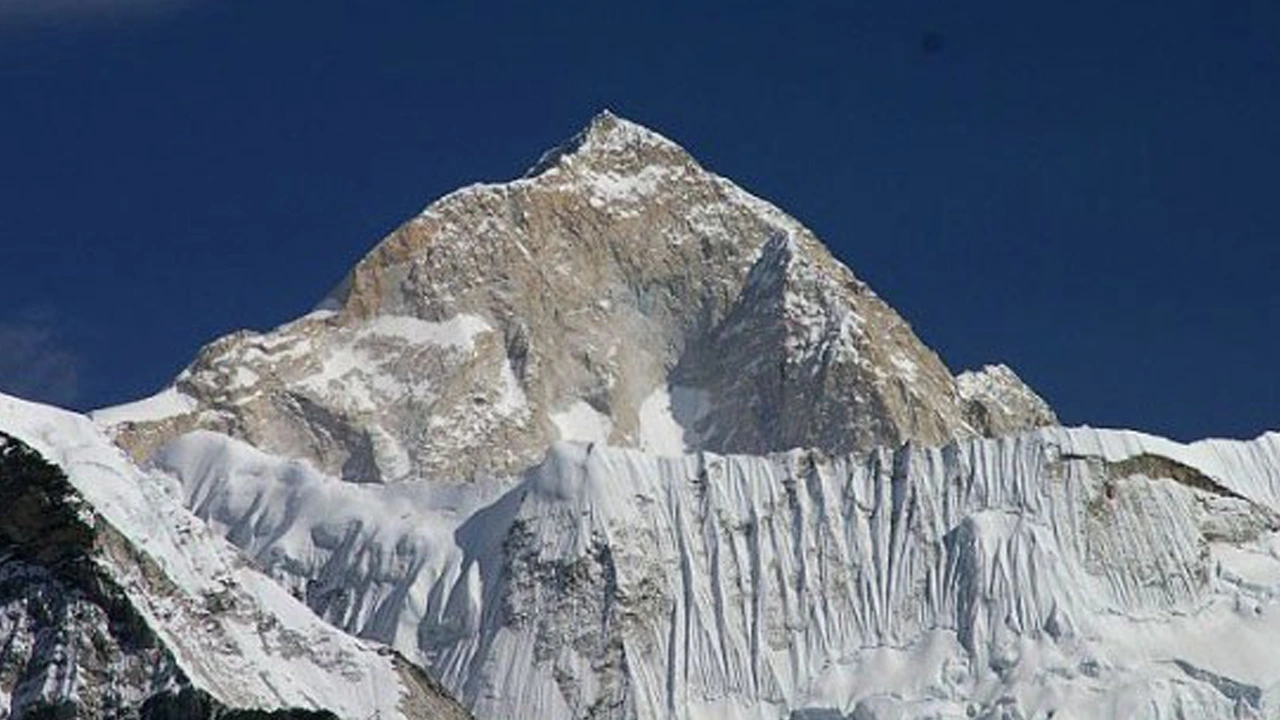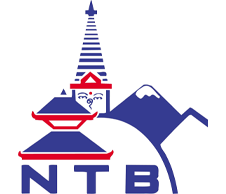On arrival at Tribhuvan International Airport, you are warmly welcomed by our representative and transferred to Hotel Yak & Yeti or a similar standard hotel. Kathmandu, with its vibrant mix of cultural heritage and bustling streets, provides the perfect backdrop before your expedition begins. The rest of the day is free for rest or a short exploration of Thamel, a lively district filled with shops and cafés. Overnight at your hotel.
Baruntse Expedition
Overview
The Baruntse Expedition is a 35-day high-altitude adventure to Baruntse (7,129m / 23,389ft), located in the Everest region of Nepal. This peak is renowned for offering climbers a challenging yet rewarding experience, combining technical snow and ice climbing with spectacular Himalayan scenery. Baruntse is ideal for experienced mountaineers seeking to sharpen their high-altitude climbing skills while enjoying views of some of the world’s highest peaks, including Mount Everest, Lhotse, Makalu, and Ama Dablam.
The journey begins with arrival in Kathmandu, where climbers are briefed and prepared for the expedition. From Kathmandu, a scenic flight to Lukla marks the start of the trek through the heart of the Everest region, passing Sherpa villages like Namche Bazaar, Pangboche, and Dingboche. The route provides excellent opportunities for acclimatization, cultural experiences, and panoramic views of Himalayan peaks.
The climb involves rotations between base camp and higher camps, allowing climbers to adapt safely to the altitude. The summit push is technical, requiring expertise in glacier travel, steep snow slopes, and fixed rope techniques. Reaching the Baruntse summit rewards climbers with unrivaled 360-degree views of the surrounding mountains, glaciers, and valleys.
Beyond climbing, the expedition immerses participants in Sherpa culture, Buddhist monasteries, and the natural beauty of the Khumbu region. With professional mountaineering guides, Sherpas, and support staff, the Baruntse Expedition ensures a safe, well-organized, and culturally enriching Himalayan adventure.
Baruntse Expedition | Major Highlights
- Summit Baruntse (7,129m / 23,389ft) via the standard climbing route.
- Trek through the Everest region, including Namche Bazaar, Pangboche, and Dingboche.
- Spectacular Himalayan panoramas including Everest, Lhotse, Makalu, and Ama Dablam.
- Cultural experiences in Sherpa villages and visits to Buddhist monasteries.
- Glacier and high-altitude climbing practice.
- Full expedition support with experienced guides, Sherpas, and cooks.
This day is set aside for official expedition briefings at the Department of Tourism. Your climbing permits are finalized, and your guide will assist with equipment checks. Any last-minute items can be purchased in Kathmandu’s trekking stores. The evening is free to relax at the hotel or explore more of the city’s cultural sites.
- Option I: A thrilling mountain flight takes you from Kathmandu to Lukla (2,800m). The rest of the day is spent acclimatizing in Lukla.
- Option II: Drive from Kathmandu to Ramechhap and take a short flight from Manthali to Lukla, followed by a trek to Phakding (approx. 4 hrs).
Both options allow a gentle start to the journey, with the trail offering glimpses of terraced fields, prayer walls, and Sherpa villages. Overnight in a lodge.
(Start: 1,350m / 4,430ft → End: 2,800m / 9,186ft | Max: 2,860m / 9,383ft | Duration: 35 min flight + 3–4 hrs trek | ↑1,450m / ↓0m)
A short trek leads to Chutanga, passing through pine and rhododendron forests. The route is less crowded than the classic Everest trail, offering peaceful surroundings. Overnight in a lodge.
(Start: 2,800m / 9,186ft → End: 3,050m / 10,006ft | Max: 3,050m / 10,006ft | Duration: 4 hrs | ↑250m / ↓0m)
This is a challenging day, as you cross the Zatrawa La Pass (4,610m). From the top, panoramic views of Numbur Himal, Kongde Ri, and the Dudh Kunda region spread out before you. After the pass, a descent brings you to Thuli Kharka, where you stay in a tea house.
(Start: 3,050m / 10,006ft → End: 3,900m / 12,597ft | Max: 4,610m / 15,125ft | Duration: 7 hrs | ↑1,560m / ↓710m)
The trail descends through rhododendron and pine forests before gradually climbing again. Kothe lies along the Hinku Valley and provides your first close-up views of Mera Peak’s south face. Overnight in a tea house.
(Start: 3,900m / 12,597ft → End: 4,095m / 13,435ft | Max: 4,095m / 13,435ft | Duration: 5 hrs | ↑195m / ↓0m)
A steady trail follows the Hinku River valley, surrounded by towering peaks. The dramatic south face of Mera Peak dominates the view all day. Thangnak, a yak herding settlement, offers simple tea house accommodation.
(Start: 4,095m / 13,435ft → End: 4,350m / 14,272ft | Max: 4,350m / 14,272ft | Duration: 4 hrs | ↑255m / ↓0m)
This acclimatization day includes a hike to Sabal Tsho Lake and further up to a cairn at 5,271m on the slopes of Kusum Kangguru. The climb provides stunning views and helps your body adjust to higher altitudes. Return to Thangnak for overnight stay.
(Start: 4,350m / 14,272ft → End: 4,350m / 14,272ft | Max: 5,271m / 17,290ft | Duration: 4–5 hrs hike | ↑921m / ↓921m)
A short but steep trek takes you to Khare, a key staging point for Mera Peak climbs. The views of the surrounding glaciers and snowy ridges are spectacular. Overnight in a tea house.
(Start: 4,350m / 14,272ft → End: 5,045m / 16,551ft | Max: 5,045m / 16,551ft | Duration: 3 hrs | ↑695m / ↓0m)
The trail climbs onto the Mera Glacier before reaching Mera La Pass. The camp is established here, with tents set up on snow and ice. This marks the beginning of the expedition-style section of the trek.
(Start: 5,045m / 16,551ft → End: 5,350m / 17,542ft | Max: 5,350m / 17,542ft | Duration: 5 hrs | ↑305m / ↓0m)
Crossing rugged glacial landscapes, you descend to Seto Pokhari (“White Lake”), a remote alpine lake surrounded by dramatic peaks. Camping by the lake provides a tranquil evening.
(Start: 5,350m / 17,542ft → End: 4,850m / 15,912ft | Max: 5,350m / 17,542ft | Duration: 5 hrs | ↑0m / ↓500m)
A gradual ascent through remote wilderness takes you to Baruntse Base Camp, where tents and facilities are established for the climbing period. The setting is spectacular, surrounded by glaciers and towering peaks.
(Start: 4,850m / 15,912ft → End: 5,300m / 17,400ft | Max: 5,300m / 17,400ft | Duration: 5 hrs | ↑450m / ↓0m)
This period is dedicated to acclimatization, setting up high camps, and making the summit push.
- Camp I (6,000m): Steep snow slopes with crevasses.
- Camp II (6,400m): Exposed ridges and ice climbing.
- Camp III (6,800m): Final camp before summit day.
From Camp III, the summit push involves challenging technical climbing over ice slopes and ridges. The summit of Baruntse (7,129m) rewards climbers with breathtaking views of Everest, Lhotse, Makalu, and countless other Himalayan giants. After summiting, you descend carefully back to Base Camp.
(Start: 5,300m / 17,400ft → End: 7,129m / 23,389ft | Max: 7,129m / 23,389ft | Duration: 15 days | ↑1,829m / ↓1,829m)
After cleaning up base camp, you trek back to Seto Pokhari. The walk feels easier as oxygen increases and the landscape turns greener. Overnight in tents.
(Start: 5,300m / 17,400ft → End: 4,850m / 15,912ft | Max: 5,300m / 17,400ft | Duration: 6 hrs | ↑0m / ↓450m)
The trail climbs back toward Mera La. Camping is arranged at the pass, once again surrounded by snowy landscapes.
(Start: 4,850m / 15,912ft → End: 5,350m / 17,542ft | Max: 5,350m / 17,542ft | Duration: 6 hrs | ↑500m / ↓0m)
A long descent brings you back to the Hinku Valley and Kothe village. The landscape turns greener, and the air feels much richer in oxygen. Overnight in a tea house.
(Start: 5,350m / 17,542ft → End: 3,600m / 11,811ft | Max: 5,350m / 17,542ft | Duration: 5 hrs | ↑0m / ↓1,750m)
You retrace your steps through forests and alpine meadows, returning to Thuli Kharka. Overnight in a tea house.
(Start: 3,600m / 11,811ft → End: 3,900m / 12,597ft | Max: 3,900m / 12,597ft | Duration: 5 hrs | ↑300m / ↓0m)
A long but rewarding day crosses the Zatrawa La Pass once again before descending steeply into Lukla. This marks your final night in the mountains. A farewell party with the staff is the perfect way to celebrate your successful expedition.
(Start: 3,900m / 12,597ft → End: 2,800m / 9,186ft | Max: 4,610m / 15,125ft | Duration: 9 hrs | ↑710m / ↓1,810m)
A morning flight takes you from Lukla back to Kathmandu. You are transferred to your hotel, where hot showers, comfortable beds, and city comforts await.
(Start: 2,800m / 9,186ft → End: 1,350m / 4,430ft | Duration: 35 min flight | ↑0m / ↓1,450m)
This buffer day allows for shopping, sightseeing, or relaxation. You can visit Swayambhunath (Monkey Temple), Boudhanath, or Patan Durbar Square. In the evening, a farewell cultural dinner celebrates the expedition’s success.
(Start: 1,350m / 4,430ft → End: 1,350m / 4,430ft | Duration: – hrs | ↑0m / ↓0m)
After breakfast, our representative transfers you to Tribhuvan International Airport for your international flight. You leave Nepal with unforgettable memories of Baruntse and the mighty Himalayas.
Cost Includes
- Airport transfers in Kathmandu.
- Domestic flights (Kathmandu–Lukla–Kathmandu).
- Accommodation in 4-star hotels in Kathmandu and teahouses/lodges during trekking.
- Full-board meals during trekking and climbing.
- Baruntse climbing permits and Sagarmatha National Park fees.
- Professional mountaineering guides, Sherpa support, and cooks.
- High-altitude climbing equipment support (tents, ropes, ladders).
- Cultural experiences along the trekking route.
Cost Excludes
- International airfare to/from Nepal.
- Personal climbing gear (boots, crampons, ice axe, harness, helmet, etc.).
- Travel insurance covering high-altitude mountaineering.
- Tips for guides, porters, and staff.
- Meals in Kathmandu outside of arranged hotels.
- Optional sightseeing or activities not mentioned in the itinerary.
FAQs
The ideal seasons are pre-monsoon (March–May) and post-monsoon (late September–November). These periods offer clear skies, moderate temperatures, and safer climbing conditions.
Baruntse is a technical peak, requiring experience in glacier travel, ice and snow climbing, and fixed rope techniques. Climbers should have prior high-altitude experience.
Yes, professional mountaineering guides and Sherpas are essential for safety, navigation, and high-altitude support. Independent attempts are strongly discouraged.
Excellent fitness, endurance, and prior high-altitude experience are mandatory. Cardiovascular and strength training are recommended prior to the expedition.
Multiple rotations between base camp and higher camps are included to safely adjust to altitudes above 5,500m and minimize Acute Mountain Sickness (AMS) risk.
High-altitude boots, crampons, ice axe, harness, helmet, insulated clothing, gloves, sunglasses, and a sleeping bag rated for extreme cold are required.
Yes, only climbers with experience in high-altitude mountaineering or technical climbs should attempt Baruntse.
Yes, full-board meals are provided during trekking and climbing by professional expedition cooks.
Safety is managed through experienced guides, Sherpas, fixed ropes, high-altitude medical kits, and oxygen backup. Climbers receive training on glacier travel, avalanche awareness, and high-altitude risks.
Yes, climbers sometimes combine Baruntse with nearby peaks like Ama Dablam or Everest Base Camp climbs for acclimatization and extended Himalayan adventure.
Baruntse Expedition
Trekking & Hiking Adventure




